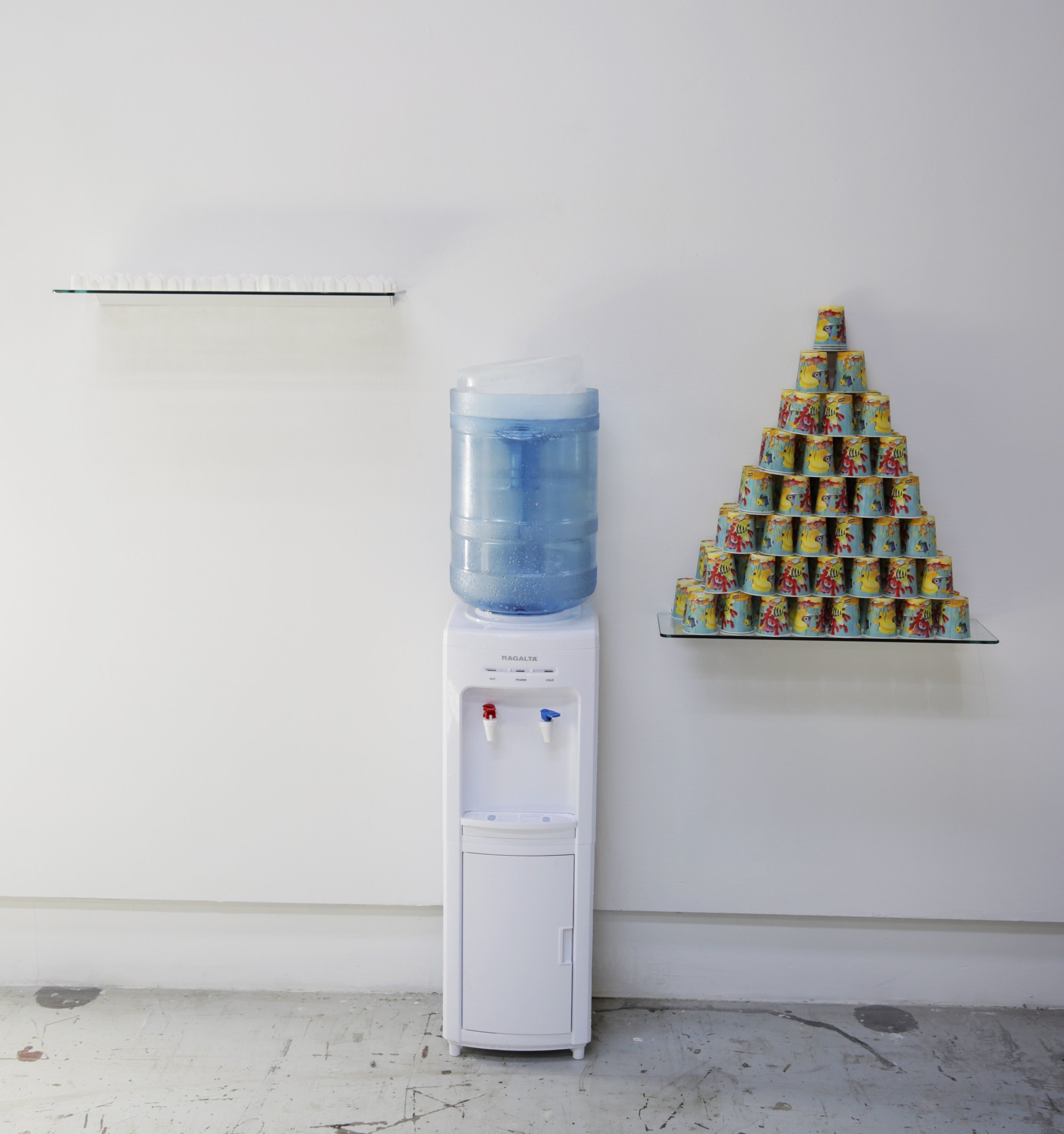







Your Custom Text Here
We have all laid awake at night worrying about our individual impact on global warming, only to arise the next morning to drive to work. It’s hard to change your wicked ways when they put food on your table and clothes on your back. Adaptive capacity is the amount of stress an ecosystem can take before it fails. This is made tangible in Adaptive Capacity by having the viewer place small houses made of salt on top of an ice block. It is quite exciting to watch the tiny little houses sink into the slab of ice. Below the ice block is a regular water cooler, one you may find in any office building. The viewer is able to drink the melting ice from the water cooler. As more houses are placed on top of the ice block, the water eventually becomes too salty to drink, a fact that is painfully obvious to the viewer. The houses represent the difficulty of breaking away from this deadly cycle due to our need for shelter and transit. Adaptive Capacity satirizes polluting the environment in order to maintain a comfort level that cannot be sustained. This irony is mirrored in Adaptive Capacity by using a diminishing block of ice as a commentary on overheating. Adaptive Capacity questions whether small individual acts can reverse the events already set in motion or if more dramatic restrictions must be forced upon us all to roll back the damage.
We have all laid awake at night worrying about our individual impact on global warming, only to arise the next morning to drive to work. It’s hard to change your wicked ways when they put food on your table and clothes on your back. Adaptive capacity is the amount of stress an ecosystem can take before it fails. This is made tangible in Adaptive Capacity by having the viewer place small houses made of salt on top of an ice block. It is quite exciting to watch the tiny little houses sink into the slab of ice. Below the ice block is a regular water cooler, one you may find in any office building. The viewer is able to drink the melting ice from the water cooler. As more houses are placed on top of the ice block, the water eventually becomes too salty to drink, a fact that is painfully obvious to the viewer. The houses represent the difficulty of breaking away from this deadly cycle due to our need for shelter and transit. Adaptive Capacity satirizes polluting the environment in order to maintain a comfort level that cannot be sustained. This irony is mirrored in Adaptive Capacity by using a diminishing block of ice as a commentary on overheating. Adaptive Capacity questions whether small individual acts can reverse the events already set in motion or if more dramatic restrictions must be forced upon us all to roll back the damage.
Adaptive Capacity